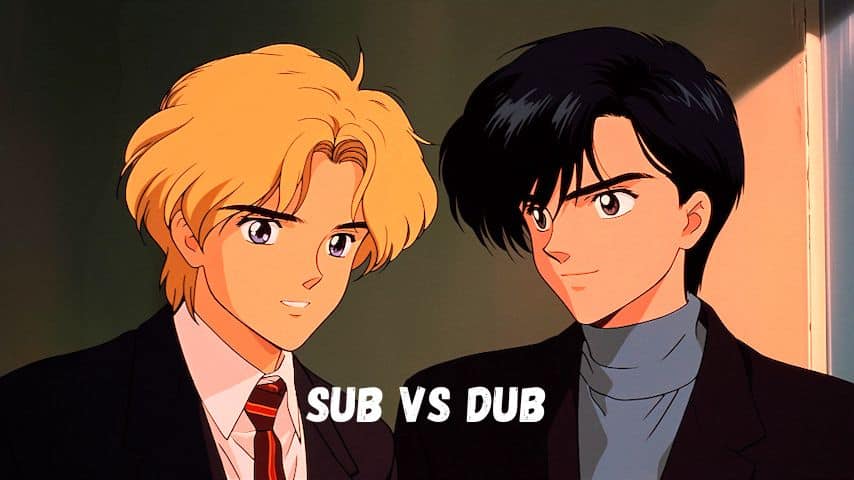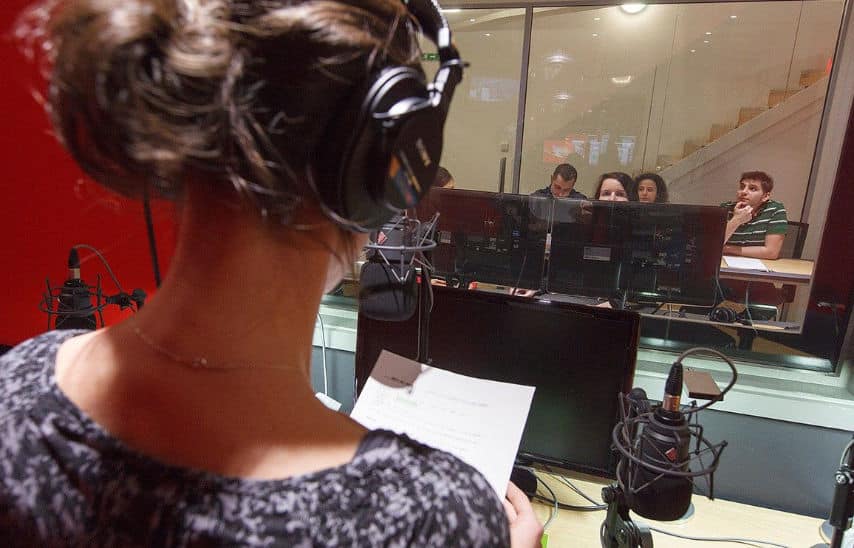Video production is a powerful medium for storytelling, and its success often hinges on the details. Among these, voice over and narration stand out as essential tools for enhancing both the message and the emotional impact of a video. Though they might seem interchangeable at first glance, these techniques serve very different purposes, and understanding the difference can elevate your content to the next level.
This guide will help you navigate the unique roles of voice over and narration, understand their strengths, and decide when to use each one. Whether you’re working on a documentary, an explainer video, or a corporate project, knowing the difference could make all the difference.
Table of Contents
ToggleVoice Over vs Narration: What Sets Them Apart?
When it comes to audio-visual storytelling, the terms “voice over” and “narration” are often used interchangeably, but they represent distinct techniques with unique purposes. Understanding what sets them apart is essential for creating content that resonates with your audience.
While both involve spoken words, voice over typically complements visuals by providing context or additional information, whereas narration drives the story, guiding viewers through events or characters’ experiences. Knowing these differences allows creators to choose the right approach for their projects, ensuring their message is delivered effectively and memorably.
What is Voice Over and How Does It Work?
Voice over refers to a recorded voice that is added to a video to provide information, explanation, or context. The defining feature of voice over is that it doesn’t directly interact with the visuals—it complements them. For example, in a TV ad, the visuals might show a product in action, while the voice over explains its features and benefits.
Voice overs are used across industries because they’re adaptable. You might find them in corporate presentations, explainer videos, or training materials, where clarity and professionalism are key. They act as the unseen narrator, guiding the audience without intruding on the visuals.
Imagine watching an explainer video for a tech product. Without a clear and concise voice over, the audience might struggle to understand how the product works. The voice over acts as a bridge, simplifying complex ideas and ensuring the message is received.
What is Narration and How is It Used in Video Production?
Narration, by contrast, is all about storytelling. It’s the voice that walks the audience through a story, tying together visuals, themes, and emotions. Narration often works in tandem with what’s on screen, providing commentary or insights that deepen the audience’s engagement.
Think about a nature documentary narrated by David Attenborough. His voice doesn’t just explain the facts; it brings the story to life, connecting the viewer to the wonders of the natural world. Whether it’s describing the stealth of a predator or the vast expanse of a rainforest, narration builds an emotional bridge between the audience and the subject.
Narration isn’t limited to documentaries. It’s also used in audiobooks, where the narrator’s tone and pacing set the mood, and in certain films where an off-screen voice adds layers to the narrative.
Read more: Male or Female Voice Actor: Choosing the Perfect Voice for Your Ad
Voice Over vs Narration: The Core Differences
While voice over and narration both involve recorded speech, they differ in significant ways:
- Voice over is typically neutral and instructional, designed to convey facts or guide the audience. It stands apart from the visuals, offering complementary information.
- Narration, on the other hand, is emotive and immersive, meant to draw the viewer into a story. It interacts directly with the visuals, adding depth and meaning.
For example, an explainer video might use voice over to provide step-by-step instructions. In contrast, a documentary on climate change would benefit from narration to tell a compelling, emotionally resonant story.
Why is Quality Narration Crucial for Video Production?
Good narration is the backbone of effective storytelling in video production. It does more than just explain—it evokes emotions, connects the audience to the content, and enhances the overall experience.
Imagine a documentary about space exploration. The visuals might be awe-inspiring, but without narration, the audience could struggle to grasp the significance of what they’re seeing. A skilled narrator can guide viewers through the journey, turning facts into an inspiring story that sparks curiosity and wonder.
Beyond documentaries, narration is vital in audiobooks, where the voice conveys characters, mood, and pacing, making the story come alive. It’s equally important in educational videos, where engaging narration ensures that complex concepts are both understandable and memorable.
When to Choose Voice Over or Narration for Your Project
Making the Right Choice Based on Your Project’s Needs
Choosing between voice over and narration requires an understanding of your project’s goals and audience. If you’re aiming to instruct or inform, voice over might be the better choice. If your goal is to immerse the audience in a story, narration is the way to go.
For instance, a corporate training video often benefits from a professional voice over to deliver instructions clearly. Meanwhile, a fundraising video that shares a heartfelt story about community impact might rely on narration to build an emotional connection with viewers.
Ask yourself: What tone do I want to set? Who is my audience? What is the primary goal of my video? The answers to these questions will help guide your decision.
Exploring Different Types of Projects
Both voice over and narration excel in different contexts:
Voice over is a staple in TV ads, where the goal is to deliver concise, persuasive messages. A well-executed voice over grabs attention and drives action, often within just 30 seconds. In eLearning content, voice overs play a crucial role in guiding learners through complex topics, ensuring clarity and comprehension.
Meanwhile, narration shines in documentaries, where it creates a seamless connection between the audience and the visuals. It provides context, builds emotional resonance, and brings the story to life. Audiobooks rely on narration to capture the essence of characters and settings, drawing listeners into a fully realised world.
By understanding the unique demands of your project, you can decide which technique aligns best with your vision.
Tips for Creating High-Quality Voice Over and Narration
Creating impactful voice over or narration requires careful planning and execution. Start with a strong script that is tailored to your audience and purpose. A good script is clear, concise, and engaging, with a natural flow that makes it easy to follow.
Investing in professional voice talent is equally important. A skilled actor can adapt their tone, pace, and delivery to suit your project’s needs, adding authenticity and depth. Don’t forget the technical side—high-quality recording equipment and meticulous editing ensure that the audio is crisp and polished.
Finally, make sure the voice complements the visuals. Whether it’s the instructional tone of a voice over or the emotive delivery of narration, the two elements should work together to create a cohesive and impactful final product.
How Voice Over and Narration Shape Storytelling
At their core, both voice over and narration are tools for storytelling. They clarify ideas, evoke emotions, and connect with audiences on a deeper level.
For example, in an explainer video about renewable energy, a clear and engaging voice over simplifies the technical aspects, making the topic accessible to a wider audience. In a documentary on climate change, narration can inspire action by connecting viewers to the human stories behind the statistics.
By choosing the right technique and executing it with care, you can ensure your video doesn’t just inform—it inspires.
Key Takeaways
When it comes to video production, understanding the difference between voice over and narration can be the key to delivering content that truly resonates with your audience. These two techniques might seem similar, but their strengths lie in very different areas, and knowing when to use each one can make all the difference.
- Voice over works best for projects like TV ads, explainer videos, and eLearning, where the focus is on clarity, instruction, or persuasion.
- Narration is ideal for storytelling-heavy content like documentaries, audiobooks, and promotional films that aim to create an emotional connection with the audience.
- The right choice depends on your project’s goals, tone, and audience expectations.
By choosing the right approach and executing it well, you can transform your video into a powerful medium that informs, inspires, or entertains. Investing in professional voice talent, crafting a compelling script, and ensuring top-notch audio production will elevate your project to the next level.
As you embark on your next video production, keep these takeaways in mind. Both voice over and narration offer incredible value, but the key to success lies in knowing your audience, your message, and the story you want to tell. With these elements aligned, you’ll have everything you need to create impactful and memorable content.






















